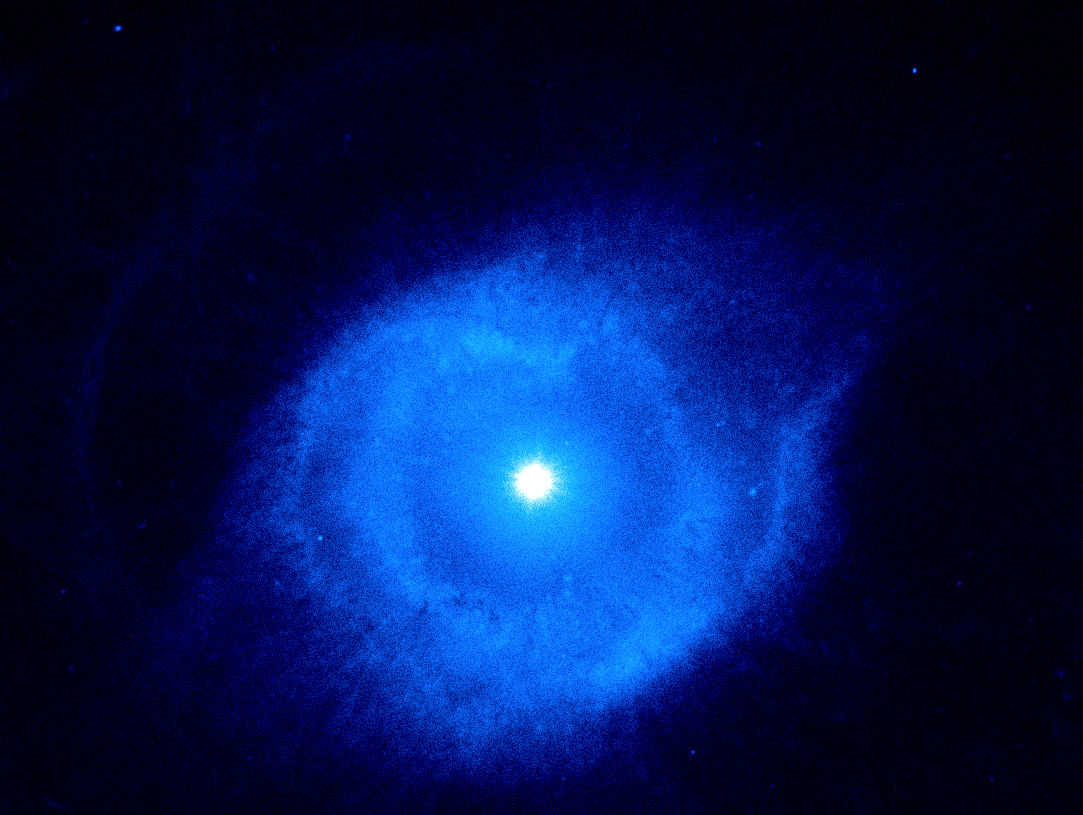|
|||||||||||||||||||
|
|
|||||||||||||||||||
gPhoton Images: Example Scripts and Results
Back To gPhoton HomepageThe Helix Nebula
The Helix Nebula (NGC 7293) is a famous planetary nebula. In this short exercise, we will create an image in the FUV of this object using gMap. Below is the python script you will make.
import gPhoton
def main():
gPhoton.gMap(band='FUV', skypos=[337.4084, -20.837], skyrange=[0.5, 0.5],
cntfile='helix_fuv.fits’)
if __name__ == '__main__':
main()
In our call to gMap, we specify we would like to make an image using all available FUV data via the "band" parameter. The coordinate of the center of our aperture is given in the "skypos" parameter. The output file made by gMap we will written to a file called "helix_fuv.fits".
The size of our image will be 0.5 x 0.5 degrees, specified via the "skyrange" parameter. Important Note #1: gMap uses degrees for the image size.
If you were to create the above python script in a file called "myscript.py" and then executed it from the Unix command line as "python myscript.py", you will create a FITS file called "helix_fuv.fits". You could then read this FITS file in using your favorite fits viewer, and scale the intensities, apply color bars, etc. as you like. Below is one version of the image.

Back To Top
|
|
|




 Follow Us
Follow Us